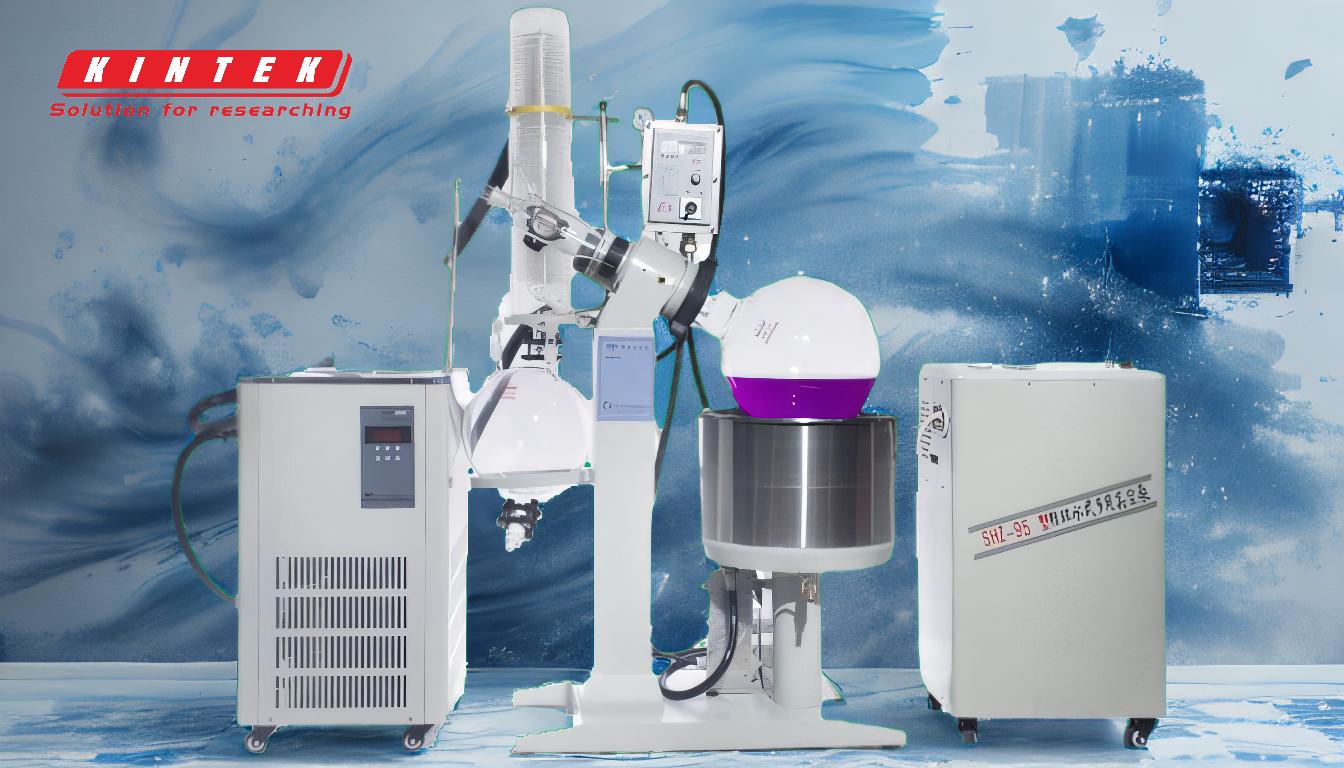The "Rule of 20" in rotary evaporation (rotovap) is a critical guideline for optimizing the distillation process. It ensures efficient condensation of solvent vapors and prevents damage to the vacuum pump by maintaining a temperature gradient of at least 20°C between the vapor temperature and the condenser coolant temperature. This rule also applies to the relationship between the heating bath temperature and the effective vapor temperature, ensuring energy efficiency and proper operation of the rotovap. By adhering to this rule, users can achieve faster evaporation rates, avoid overloading the condenser, and maintain the integrity of the distillation process.
Key Points Explained:

-
Definition of the Rule of 20:
- The Rule of 20 is a guideline for rotary evaporation that ensures proper condensation and efficient energy transfer during the distillation process.
- It specifies that the condenser coolant temperature should be at least 20°C lower than the solvent vapor temperature.
- Additionally, the effective vapor temperature is approximately 20°C lower than the heating bath temperature due to energy loss during evaporation.
-
Temperature Gradients in Rotary Evaporation:
- Heating Bath Temperature: The temperature of the water or oil bath used to heat the solvent in the round-bottom flask.
- Effective Vapor Temperature: The temperature of the solvent vapor as it evaporates, which is typically 20°C lower than the heating bath temperature.
- Condenser Coolant Temperature: The temperature of the coolant (e.g., water or refrigerant) used to condense the solvent vapor, which should be at least 20°C lower than the vapor temperature.
-
Example of the Rule of 20 in Practice:
- If the heating bath is set to 50°C, the effective vapor temperature will be approximately 30°C.
- The condenser coolant temperature should then be set to 10°C or lower to ensure proper condensation.
- This temperature gradient ensures that the solvent vapor is efficiently condensed without overloading the condenser or compromising the vacuum pump.
-
Importance of the Rule of 20:
- Efficient Condensation: Maintaining a 20°C difference between the vapor and coolant temperatures ensures that the solvent vapor condenses effectively, preventing it from reaching the vacuum pump.
- Energy Optimization: By balancing the heating and cooling temperatures, the rule minimizes energy waste and maximizes evaporation efficiency.
- Equipment Protection: Adhering to the rule prevents damage to the vacuum pump and condenser by avoiding excessive vapor pressure or temperature.
-
Practical Considerations:
- Solvent Properties: The Rule of 20 should be adjusted based on the boiling point and volatility of the solvent being distilled.
- Rotovap Settings: Users should also consider rotation speed, vacuum level, and flask size when applying the rule.
- Safety Precautions: Always follow manufacturer guidelines and exercise caution when working with volatile or hazardous solvents.
-
Additional Tips for Using a Rotary Evaporator:
- Ensure the round-bottom flask is no more than half full to prevent spillage or uneven heating.
- Use a flask of appropriate size for the volume of solvent being evaporated.
- Record the mass of the clean, empty flask before starting to facilitate accurate measurements.
- Avoid turning off the rotovap unnecessarily; it can remain running unless the lab session is complete.
By understanding and applying the Rule of 20, users can optimize their rotary evaporation processes, ensuring efficient solvent removal, energy conservation, and equipment longevity.
Summary Table:
| Key Aspect | Description |
|---|---|
| Rule of 20 Definition | Maintain a 20°C gradient between vapor and coolant temperatures for efficiency. |
| Heating Bath Temperature | Temperature of the bath heating the solvent (e.g., 50°C). |
| Effective Vapor Temperature | Typically 20°C lower than the heating bath temperature (e.g., 30°C). |
| Condenser Coolant Temperature | At least 20°C lower than vapor temperature (e.g., 10°C or lower). |
| Benefits | Efficient condensation, energy optimization, and equipment protection. |
Optimize your rotary evaporation process with the Rule of 20—contact our experts today for personalized guidance!


















